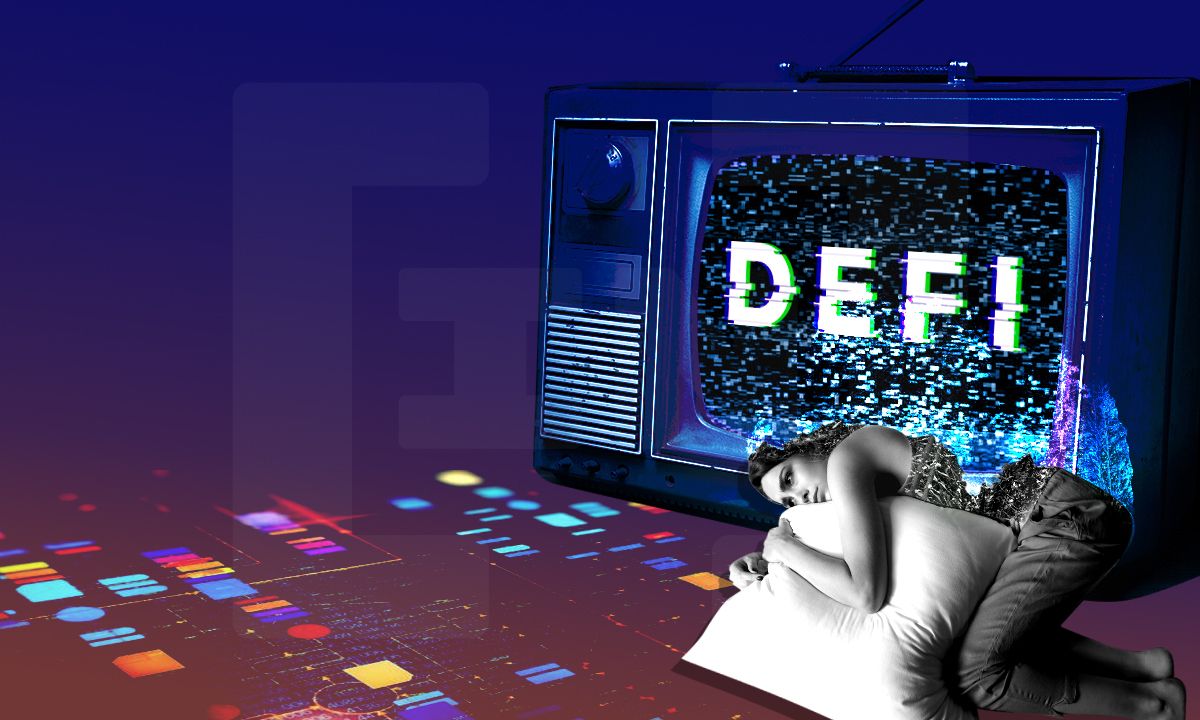DeFi has felt the burn of the recent market crash. Popular operations tanked and even defaulted on loans. However, others are taking this moment to understand what makes a successful ecosystem in the long term.
The crypto bear market is old news. Over the last few months, sensational coverage of the death of Bitcoin and the industry at large dominated the headlines. Only for Bitcoin to dip towards a low of around $19,000 on Thursday, June 30, further accentuating the market dip.
In light of market uncertainty, DeFi protocols specifically faced a tumultuous first and second quarter. The news of the crash of the Terra ecosystem (UST) and subsequently the mass delisting of LUNA propelled the climate of instability in the market.

Less than a month later the Celsius lending protocol halted all withdrawal possibilities.
Not to mention the Three Arrows Capital (3AC) defaulting on their multimillion-dollar loan on June 27. On the surface, these may not appear as ideal building conditions. However, industry insiders know this is the time to buckle down and build up.
What does it take to build a successful DeFi ecosystem no matter what the market climate? Be[In]Crypto spoke with Francisco Agosti, Head of Business Development at Moonbeam about the biggest challenges, strategies, and considerations for building for the future Web3 market.
Growing in the unknown
Startups in any industry face a mountain of challenges when first entering the market.
However, in the DeFi space, these struggles can seem amplified. This is because the scene itself is new. In general, everyone is still learning and defining the space as it grows. Therefore gaining trust, moreover persuading users of one protocol is daunting.
Additionally, the underlying technology itself is in rapid development mode – constantly refining and evolving. Even the most successful protocols experienced some of this struggle.
“The biggest challenge at the beginning when we were unknown, was growing the ecosystem,” said Agosti. “Speaking to teams and getting them to build on Polkadot and Moonbeam.”
In these times, the companies that hustle up front create more possibilities in the long term. “We had to hustle a lot and execute and be able to pitch the project well, in order to have a lineup of projects that we wanted to deploy on when we were in Moonbeam at launch.”
“The triumph is the traction that we’ve received as soon as we launched Moonriver,” Agosti related. “It was really surprising in a positive way, the amount of projects we saw organically deploying and building. There’s a lot of activity right now in the network. It was a great surprise after working a lot to see all these teams building and moving forward.”
Sponsored SponsoredUse cases are key
However, hustling and networking in the beginning stages only goes so far when building a protocol. Once these users come to the ecosystem – what is there to interact with? Use cases are key to a successful startup.
Although a protocol might not start off with an array of ways users can interact with the technology, working towards that should be a goal. Agosti says this is the definition of success in the DeFi space. “Success, I think, is always building new use cases.”

“I think the strength of Polkadot lies in the parachain network,” he says. “So we need to work a lot with other parachain teams to build use cases that are relevant to the interoperability that we focus on providing. I think that’s going to be a challenge. This is something that we’re investing a lot of resources into.”
Metaverse included
Success of the protocols in part depends in part on the success of Web3 as a whole. For a more dynamic and sustainable metaverse, the Moonbeam Business Development lead says it’s all in the use cases.
Sponsored“I want to see more practical use cases in the metaverse,” he says. “On Moonriver, for example, there’s a lot of activity with NFTs – utility-driven NFTs in games in particular. That’s already adding a lot of utility.”
He says DeFi, in general, has more utility than the metaverse in general – but that area will explode in years to come. This past February Mark Zuckerberg showcased his AI projects as catalysts for further metaverse use cases.
“It’s difficult though to predict future use cases that will gain traction with the broader population. I’m interested to see specific projects and what use cases will come because for now, there’s a lot of hype around it.”
Prioritizing Users
However, as use cases develop Agosti highlights prioritizing user experience. “Right now Web3 is very backend focused. It’s very engineering focused, rightfully so, as it’s a technical space.”
A Web2 legacy worth the attention when developing Web3 applications is user experience design (UX). Many of these applications complicated operations, ideas, and technologies with the potential to disrupt the way we interact in digital spaces.
However, if users cannot interact with these applications in an easy and efficient way these use cases are not accessible.

“Users are too exposed to complexities on the back end,” says Agosti. “Things like needing to change networks and the RPCs, for example. People shouldn’t be able to know those things, in order for my mom to use it.”
Moving forward
Although the bear market continues, protocols and applications with foresight are using this time to build. With a combination of pushing project visibility, use case growth, and accessible user interfaces projects can get ahead of the market downturn.
“These things are always cyclical. Bear markets are good to establish stronger projects and wash away scammers and things of that nature. After the bear market, the Web3 industry will come out stronger than it was before.”
Picking priorities
Moonbeam launched in January of this year and since then Agosti reports a large amount of organic activity in the network. This includes nearly 200 projects built on the ecosystem.
The future of Moonbeam is focused on “connected contract” use cases with a goal to be layer-1 optimized for developers that want to build applications that span several blockchains.
The protocol will utilize generic message passing to allow smart contracts to communicate across chains and will ultimately solve a lot of the fragmentation problems commonly seen in web3 today.
In addition, we believe that the user experience will be significantly improved given that they will no longer have to understand a lot of the infrastructural complexities that they’re currently exposed to when interacting with DApps.

